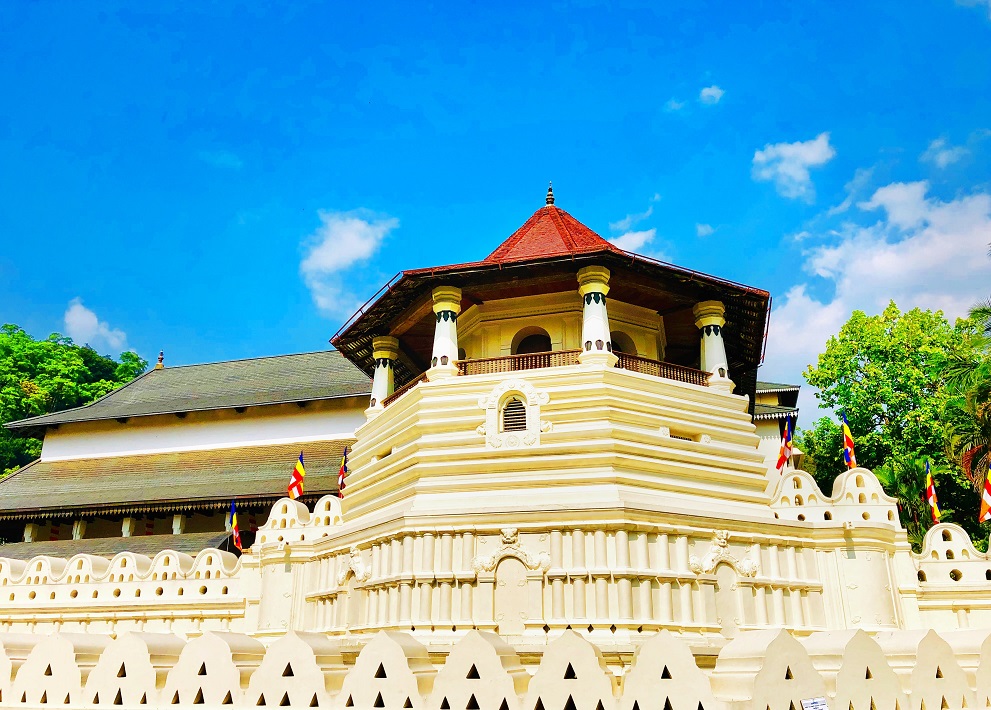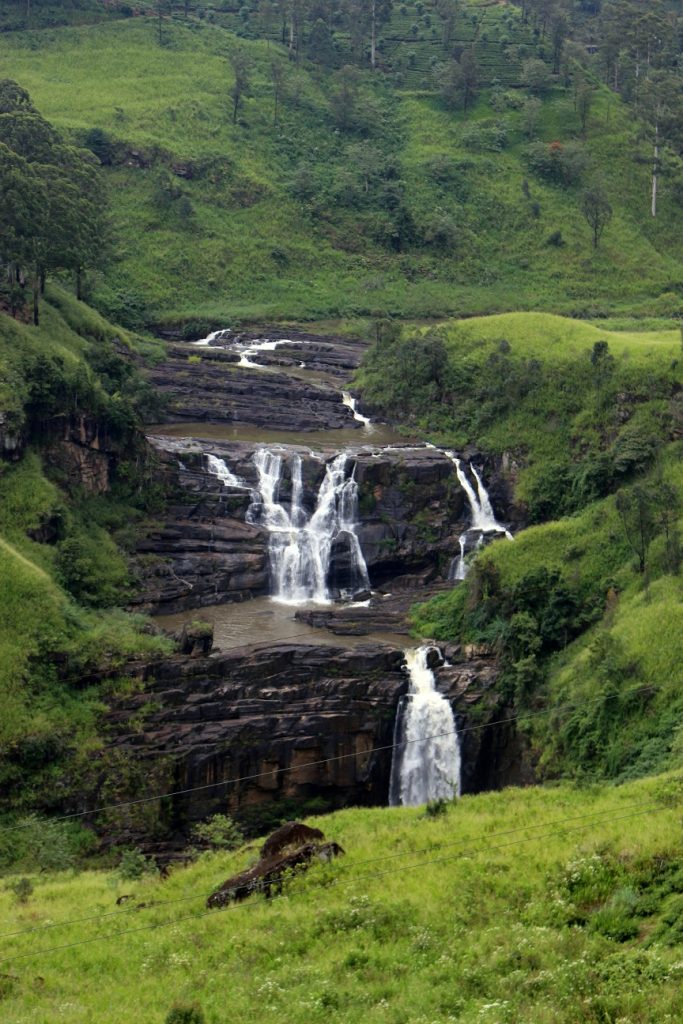Sri Lanka, formerly known as Ceylon has aptly been dubbed as the pearl of the Indian ocean–a true paradise isle. From its pristine white sandy, palm-fringed beaches, to its lusciously vibrant green mountains and wildlife backdrops, it truly has everything; a land like no other.
At The Visit Lanka Tours, we believe you should get the best possible experience during your visit to Sri Lanka. Our 14 day round tour of Sri Lanka has been carefully tailor-made to ensure you get to enjoy the magic and splendour that is Sri Lanka, to the fullest.
before this we recommend you to read our 14-day Sri Lanka Itinerary. But this itinerary is a bit changed from the original one.
Day 1 – Colombo

Colombo, the commercial capital of Sri Lanka, is perpetually buzzing with life; its rich culture and diversity visible in every nook and cranny.
Colombo’s food culture is arguably the best in the world–from an array of 5-star hotels, to the humble street food stalls, Colombo’s food culture is definitely not something to miss out on.
Things to do in Colombo:
- Visit the Gangaramaya temple
- Visit Galle face green during sunset hours to fly kites and try its incomparable street food stalls
- Visit the streets of Pettah and the local bazaars
Day 2 – Dambulla and Minneriya National Park

Dambulla, which is an ancient city part of the cultural triangle, is home to the famous Dambulla Cave Temple and some other smaller cave temples. The complex is made up of five Buddhist Temples and a giant golden Buddha.
The Dambulla Cave Temple houses a giant resting Buddha statue surrounded by smaller standing statues and wall paintings depicting the life of Gautama Buddha. It is common for the Buddhist people of Sri Lanka to go on pilgrimage in the Cultural Triangle and foreign visitors can also undertake this pilgrimage to some extent, but they will need to dress accordingly and preferably be accompanied by a local to properly partake in the ritualistic customs.
About 45 minutes away from Dambulla is the Minneriya national park–one of the best places in the country to see wild elephants, which are often present in huge numbers. Dominated by the ancient Minneriya Wewa, the park has plenty of scrub, forest and wetlands in its 88.9 sq km to also provide shelter for toque macaques, sambar deer, buffalo, crocodiles and leopards. No trip to Sri Lanka is complete without a chance to marvel at the wildlife this country offers!
Day 3 – Sigiriya

Sigiriya which is part of the cultural triangle of Sri Lanka, is the most popularly visited ancient city in Sri Lanka, owing to the UNESCO world heritage site and 8th wonder of the world, Sigiriya Rock, being situated there.
Built in the fifth century by King Kashyapa, Sri Lanka’s Sigiriya rock fortress attracted the attention of British archaeologists in the 1800s, who were amazed by its leonine rock art and beautiful frescoes
Day 4 – Polonnaruwa

Sri Lanka’s second most ancient kingdom, Polonnaruwa became the capital of Sri Lanka following the destruction of Anuradhapura in 993 AD. It has witnessed many civilizations such as the Cholas who were disciples of Brahmanism and of course the Sinhalese between the 12th and 13th centuries.
The city stands as a testament to one of the most astounding urban creations built by King Parakramabahu I. The city is a glorious reminder of a flourishing civilization which has left behind its culture and temples still present today.
Day 5 – Anuradhapura

Anuradhapura is located in the north of Sri Lanka and is the very first capital of the country (from 308 BC to the 11th century AD). The reason why most people come to Anuradhapura is the old town, a large site full of excavated temples, baths and museums.
Spend your day exploring the old town and the ancient architecture which tells a story on its own.
Day 6 – Kandy

The southernmost tip of the triangle is the city of Kandy where the Kandyan empire ruled between the 14th and 19th centuries.
It is in Kandy that the Temple of the sacred tooth relic is kept at the Temple of the Tooth– a large temple complex full of sculptures and paintings depicting Gautama Buddha. The Temple of the Tooth and the city of Kandy are the main highlights in one of the most magnificent festivals of Sri Lanka, the Poya Perahera.
Kandy Lake, also known as Kiri Muhuda or the Sea of Milk, is a beautiful artificial lake in the heart of the hill city of Kandy, Sri Lanka, built in 1807 by King Sri Wickrama Rajasinghe next to the Temple of the Tooth.
Day 7 – Nuwara Eliya

The town of Nuwara Eliya, which is mostly famous for its tea production in Sri Lanka, offers a much cooler climate and is filled with idyllic british-style bungalows. There is even an area dedicated solely to this style of architecture aptly named ‘Little England.’
Apart from the tea plantations; Horton Plains National Park, Gregory Lake, and Sita Temple are some of the popular places to see in this town.
Indulge yourself in the famous High Tea at the Grand Hotel and spend your day walking about this beautiful little town which has plenty to offer.
Apart from the tea plantations; Horton Plains National Park, Gregory Lake, and Sita Temple are some of the popular places to see in this town.
Day 8 – Ella

Take the train from Nuwara Eliya to Ella, which is known to be one of the most beautiful and scenic train rides in the world, crossing the famous demodara nine-arch bridge.
Ella is a town most popular for its lush green mountains and waterfalls. Plan a hike with one of our guides to get the most out of this opportunity
Day 9 – Yala and Udawalawe National Park

Teeming with wildlife, the Yala and Udawalawe National Parks are definitely must-visit locations to add to your Sri Lankan itinerary.
Most people visit Yala to see its majestic leopards. Some of the other animals that you can see in Yala national park include elephants, Sri Lankan sloth bear, water buffalos, wild boar, peacocks, spotted deer, Jackal, mongooses, bandicoots, endemic toque macaque, crocodiles, and grey langur
The best time to visit Yala national park is from February to August, when it is the dry season in Yala. During this time period animals can be easily observed gathering around waterholes and lagoons.
You need to visit Yala national park either early in the morning or late afternoon to see animals. The morning safaris in Yala national park take place between 6.00 am and 9.00 am. The late afternoon jeep safaris take place between 3.00 pm and 6.00 pm.
Udawalawe national park is equal to Yala national park with its beauty. Grasslands are the most prominent feature of Udawalawe national, but it also has marshes (wetlands), scrublands, forests, and mountainous areas.
The elephants are the main highlight of Udawalawe national park.
You can also see water buffalos, wild boar, peacocks, spotted deer, jackal, mongooses, bandicoots, foxes, endemic Toque Macaque, crocodiles, and grey langur in Udawalawe national park. However, it is unlikely that you see all of these animals in one safari
Unlike in Yala, you can observe animals even at midday in Udawalawe (especially elephants). In our experience you have the best chances of seeing animals in Udawalawe national park during late afternoon jeep safaris (3.00 pm to 6.00 pm).
Day 10 to 11 – Tangalle

Tangalle, known for its beautiful beaches and serene ambience is the perfect place to unwind and relax on the beach, king coconut in hand.
Restaurants serving fresh seafood can be found in abundance, and the locals are warm and friendly, always ready to lend a helping hand.
It is one of the largest towns in the southern province. It is located 195 km south of Colombo and 35 km east of Matara. It has a mild climate, in comparison to the rest of the district, and sandy beaches.
Places to visit in and around Tangalle include:
- Goyambokka beach
- Hummanaya blow hole
- Kalametiya bird sanctuary
- Rekawa turtle watch
Day 12 – Mirissa

Mirissa bay has its surfing culture to thank for its newfound popularity; surfers travel from all over the world to visit Sri Lanka’s southern coast beaches, which yet remain unparalleled.
Places to visit in Mirissa include:
- Parrot rock: a giant rock formation in the middle of the sea which can be reached during low tide and provides for the most spectacular view of the sunset.
- Secret beach mirissa: for its clear waters and sandy shores
- Coconut tree hill: for a unique photo opportunity!
Day 13 – Galle

Another must visit site is the famous Galle fort which is a fortress built during the 1500s.
Spread over a humongous area of 36 acres, the fort is a settlement in itself which showcases the colonial heritage of Galle which is by far the most important tourist attraction in Galle.
Spend your day walking along the cobblestoned streets of Galle fort, a fort and
appreciate the architecture, restaurants, boutique shops and sense of quaint-town magic it exudes!
Day 14 – Airport drop off
Spend your last day in Sri Lanka relaxing and trying out the local cuisine, while we handle all the necessary last-minute preparations for your departure.
Our team will assist you with your luggage and ensure that all your documents are in order for a smooth departure at Bandaranaike International Airport.
Best time to visit Sri Lanka
Sri Lanka is genuinely a year-round holiday destination, although the best time to visit Sri Lanka is between December and mid-April, which is considered to be the peak season. Temperatures are fairly constant year round, with coastal regions enjoying average temperatures of 25-30°C and the highlands 15-18°C on average. If you’re travelling during the summer months (May to September) you’ll want to head towards the east coast and northern regions for dry, sunny weather, as the west and south west coasts experience rain at this time. However, the west and south west enjoy favourable weather conditions during the winter months (October to February) when the monsoon season hits the east and north.
Contact The Visit Lanka Tours for a well-planned and guided 14 day round tour in Sri Lanka to ensure you get the best experience Sri Lanka has to offer!




